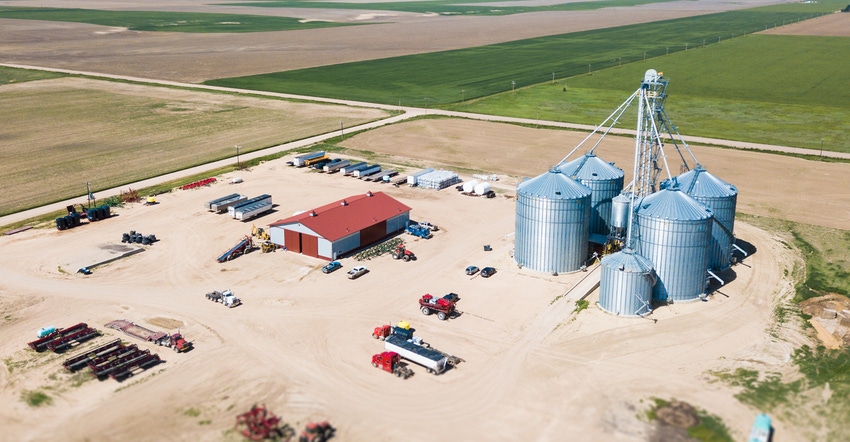
2020 could have been a lot worse for Kansas farmers. The Kansas Farm Management Association released its net income data for 2020, and economists say strong crop yields combined with dramatically improved grain prices and government payments helped Kansas farms weather the COVID-19 pandemic.
Net farm income for KFMA members rose to $167,894 in 2020, up from $108,960 in 2019, and well beyond the five-year average of $98,282. KFMA says this is a string of increasing gains since the lows of 2015, when net farm income was just $6,744 — the lowest average in 30 years.
Kevin Herbel, KFMA director, says 2020 was expected to be a wild roller coaster ride.
“We do think it’s important to acknowledge that a lot of people have experienced some significant difficulty during the year,” says Mark Dikeman, KFMA associate director. “We may talk about averages and positives or negatives for the year. But it’s really important to consider that some people did have considerable losses that they may still be dealing with — whether that’s loss of loved ones, or loss of employment or something similar.”
There were early expectations of a sharp drop in net farm income because of market and supply chain disruptions, and temporary livestock processing closures because of pandemic precautions in the manufacturing sector. Dry weather in some areas would lead to increased feed costs for livestock enterprises. But pandemic-related relief payments meant KFMA farmers had a better-than-expected year.
Government payments
Farmers and livestock producers benefited from government payments linked to coronavirus pandemic relief as well as the traditional program payments from the Agriculture Risk Coverage and Price Loss Coverage, Herbel explains. Those, plus livestock and conservation payments, averaged $133,078, or 67% of net farm income, he adds. Without those, 2020 net farm income would have averaged just $54,816 per farm.
“The south-central and southwest areas have the strongest net incomes, with the government payments removed, as we look around the state,” Dikeman says. “And certainly the lowest income, if we take away all government payments, is in northwest Kansas — where they would have had about a $42,000 loss for the year.”
While not all Kansas farms are members of KFMA, the data they send in serve as a barometer of how farms in the state are faring each year. The 2020 KFMA Executive Summary is available online. It shows:
• Irrigation. Farmers who irrigate 20% to 60% of their crops averaged $211,058 in net farm income. Those who irrigate more than 60% of their crops averaged a little less, at $205,567.
• Dryland. Net farm income for dryland farmers averaged $176,047.
• Diversification. Diversified farms that raise crops and have beef cattle backgrounding operations averaged $173,443. Those who also finish their own cattle raised their net farm income average to $203,546.
• Dairy. Average net farm income for dairy cattle operations got a significant boost in 2020, at $188,279. That was more than double the 2019 average of $66,647.
• Cow herd. Cattle producers whose only source of income was the cow herd averaged $61,932, up from $51,986 in 2019.
Farm financial health
The 2020 KFMA results show that farmers and ranchers are investing the higher prices and government payments back into their operations. Net worth for the average KFMA farm through 2020 rose by $135,811. Total debt per farm decreased 3.15%, the largest annual decrease in debt since the early 1970s.
Farmers saw the gross value of crop production increase to $414.30 per acre, the highest level since 2013. However, crop production costs rose by 2.2%. Farmers, it seems, made their delayed machinery and equipment purchases in 2020, which Dikeman attributes to some of the government program payments that came toward the end of the year. Farmer still managed to keep their machinery costs level at $91.50 per acre. KFMA attributes that to a decrease in fuel expense offsetting an increased depreciation expense.
On the livestock side, the value of livestock raised by an average KFMA farm increased 17.6%. But Herbel cautions that more than 26% of that total value came from COVID-19-related government payments. Without those, the value of livestock production would have dropped 13.8% from 2019.
What’s truly important to remember is that all farms and farm managers are different, and it’s critical that farmers know their own cost of production, Herbel says. That way, they’re in a better position to take advantage of opportunities when they present themselves in the future.
See the 2020 KFMA Executive Summary online.
KFMA and Kansas State University Research and Extension contributed to this article.
About the Author(s)
You May Also Like






